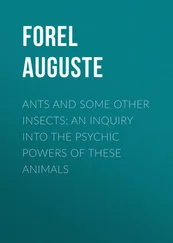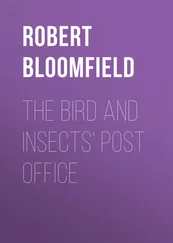| NAME |
water penniesin the family Psephenidae |
| LOCATION |
worldwide |
| ATTRIBUTE |
shaped to withstand rushing torrents |
Despite rolling boulders and white water, life continues beneath the surface of fast-flowing rivers. There, attached to the stones in the water, live water pennies. So named because they are roughly the size of a one-cent coin (a penny), these creatures are the larvae of beetles. The adult beetles are terrestrial, but their larvae are wholly aquatic.
A water penny is multi-segmented, with each segment flattened into a flange that surrounds its body, hiding head, legs and gills beneath a smooth carapace. It clings tight to rocks and stones using its clawed feet. If it cannot get a purchase, then even slow-moving water can wash it away. The larvae spend most of the time under stones or pressed into small cracks in the rocks, feeding on microscopic algae. But they must leave the water to pupate, and at such times they are exposed to the force of the water.
In rapidly moving water, there is a boundary layer of calmer water at the bottom, slowed by friction with the river bed. Small and flattened, water pennies can sit within this layer, but they cannot afford to be complacent. As well as clinging on tight with their feet, they use hydrodynamics to hold fast. By pumping water out through the gaps between their segments and at the tail end of the body, they can reduce turbulence to creep slowly through the force of the flow.
| NAME |
dog day cicada Tibicen pronotalis |
| LOCATION |
North America |
| ABILITY |
makes the loudest noise of any insect |
Insects are generally small, secretive and quiet. Most are reluctant to draw attention to themselves, but the cicadas are an exception. Along with crickets, katydids and grasshoppers, the cicadas use sound to communicate with each other, and they do so in the loudest manner possible.
On each side of the first abdominal segment is a large round organ called the tymbal. The tymbal, just like a drum, has a stiff elastic membrane held taught by a rigid circular frame. Inside the insect’s abdomen, a large muscle is attached by a narrow thread to the centre of the membrane. When the muscle contracts it distorts the tymbal membrane, causing it to buckle suddenly, creating an audible snap. When it relaxes, the membrane clicks back to its resting position. By vibrating the membrane at 4,000 to 7,000 times a second, the clicks become merged into a continuous whining buzz. Inside the abdomen, two air sacs (modified breathing tubes) are tuned to the natural frequency of the tymbals and act as amplifiers. The noise made is astounding, easily competing with loud power tools, lawn mowers or motorcycles. Cicadas on the motorway verge can often be heard from inside fast-moving cars, or through dense forest from over 1 km away.
The volume of a noise is measured using sound pressure level meters. The loudest sustained volume recorded for an insect is for an African cicada, Brevisana brevis , which clocked up 106.7 decibels. Human hearing is damaged by prolonged exposure to this volume and the recommended limit is less than two hours per day. Brevisana keeps it up all day long. The loudest peak cicada call ever recorded was for one of the North American dog day cicadas, Tibicen pronotalis , which reached 108.9 decibels during an alarm call. The normal purpose of cicada ‘songs’ is for males to call to females and announce territoriality to each other. On the whole the largest cicadas make the most noise, so everyone knows who is the biggest. Alarm calls are made as a defence against birds, and at these volumes the sound is truly repellent.
| NAME |
big-headed fliesin the family Pipunculidae |
| LOCATION |
worldwide |
| ATTRIBUTE |
superb stock-still hovering |
When, on 29 September 1907, the French aviation pioneer Louis Charles Breguet lifted off the ground in an erratic prototype helicopter, Gyroplane 1, he was trying to emulate a flight technique long mastered by insects – hovering. The ability to hang in mid-air, even for just a moment, is of paramount importance if an insect wants to land on a leaf or a flower, as there are no runways for a glide-down descent.
Because insects can flex (twist) their wings, thrust and lift can be generated by both backwards and forwards strokes. In the fastest insects, the power stroke (pushing backwards) and the recovery stroke (pulling the wings forwards again) generate nearly all thrust, with just enough lift to keep level flight. In hoverers, thrust and lift are directed straight down, with just enough power to support an insect stationary.
Among the best-known hovering insects are the hawkmoths and bee-flies, which hover apparently motionless while drinking nectar from a flower. Others include the hoverflies, named for their habit of hovering in a shaft of light, over a flower, or in a woodland clearing. That hovering is important to these large and brightly coloured insects is demonstrated by the fact that they have huge eyes; in the males there is very little else on the head except the eyes. The large eyes give all-round vision to monitor the air-space in every direction and to maintain a fixed hovering point in the air. The males have larger eyes as it is they that do most of the hovering, guarding a three-dimensional territory, seeing off other males and enticing females.
But even hoverflies are out-hovered by one other group of insects, which are rather small and drab. The obviously named big-headed flies have big heads and, again, the males are all eyes. Their vast eyes give the same clue to all-round vision and territoriality. But instead of hovering brazenly in the large air-space under the spreading bough of a tree, they choose a discrete bush or a small space within the herbage. To the entomologist they demonstrate their flying skills by hovering in the folds of the insect net or inside the small glass tube as they are examined under a hand lens.
| NAME |
lobster moth caterpillar Stauropusfagi |
| LOCATION |
Europe and northern Asia |
| ATTRIBUTE |
the most plug-ugly bug |
It is the strange and unorthodox that most greatly offends our senses. This, combined with a lack of knowledge, creates fear and misunderstanding. So it is with the caterpillar of the lobster moth. And although derided as a gothic monstrosity and grotesque beast by many writers, it is not to offend or frighten humans that this strange and unorthodox maggot has evolved. Birds trying to eat it are its greatest enemies, and it is from them it must hide, or defend itself.
Early natural philosophers recorded that this peculiar animal was half spider and half scorpion. With its crustacean-like form, it is easy to see how it gets its English name. Its swollen tail has long, thin appendages, threateningly sting-like in appearance. These are the ‘anal claspers’, which in most other caterpillars are the last pair of sucker feet on the end of the caterpillar’s body. The second and third pair of front legs are also grossly lengthened and the caterpillar waves them about in an aggressive manner if disturbed.
Pretending to be dangerous is the last resort of the lobster moth caterpillar. It would rather remain motionless, undetected because it just does not look like an edible morsel. Its bizarre knobbly shape is likely to be overlooked by predators because instead of appearing like a ‘normal’ caterpillar (cylindrical, smooth, plump) it looks like a bit of shrivelled dead leaf.
Читать дальше












